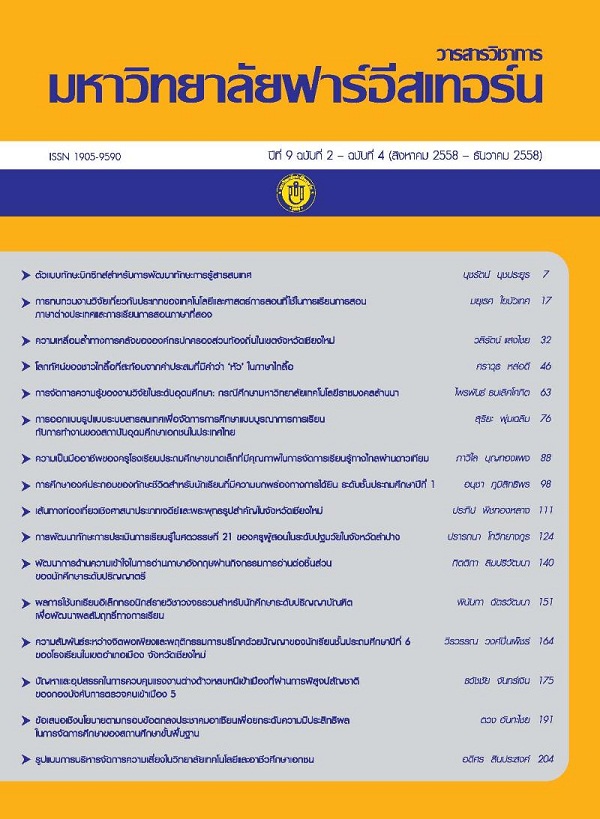โลกทัศน์ของชาวไทลื้อที่สะท้อนจากคำประสมที่มีคำว่า ‘หัว’ ในภาษาไทลื้อ
Main Article Content
Abstract
บทความนี้มีวัตถุประสงค์เพื่อศึกษาโลกทัศน์ของชาวไทลื้อที่สะท้อนจากคำประสมที่มีคำว่า หัว ในภาษาไทลื้อ
จำนวน 106 คำ ตามแนวคิดสมมติฐานซาเพียร์-วอร์ฟ ผลการศึกษาพบว่า คำประสมที่มีคำว่า หัว ในภาษาไทลื้อ
สะท้อนโลกทัศน์ของชาวไทลื้อ 3 ด้าน ได้แก่ ด้านแรก โลกทัศน์ด้านความเชื่อ ศาสนา และประเพณี ชาวไทลื้อ
มีความเชื่อเรื่องสิ่งเหนือธรรมชาติ ฤกษ์ยาม และทิศ อีกทั้งยังปฏิบัติตามข้อกำหนดในประเวณี 15 หรือประเพณี
15 ประการ เพื่อเป็นการสืบทอดพุทธศาสนาและประเพณี ด้านที่สอง โลกทัศน์ด้านชนชั้นและการปกครอง ชาวไทลื้อ
แบ่งกลุ่มคนออกเป็น 2 ชนชั้น คือ ชนชั้นปกครอง และชนชั้นถูกปกครอง นอกจากนี้ยังมีการปกครองเป็นระดับ
จากหน่วยที่มีขนาดใหญ่ไปหาหน่วยที่มีขนาดเล็ก คือ พันนา เมือง ตำบล และหมู่บ้าน ตามลำดับ และด้านที่สาม
โลกทัศน์ด้านวิถีชีวิต ประกอบด้วย การตั้งถิ่นฐาน การแต่งกาย พืชท้องถิ่น การคมนาคม และการประกอบอาชีพ
ของชาวไทลื้อ
This article aims to study the worldview of Tai Lue people from 106 compound words containing
the word, ‘head’ based on Sapir-Whorf Hypothesis. The results showed that the compound words
containing the word, ‘head’ in Tai Lue language reflected three perspectives of Tai Lue’s worldview. These
were, firstly, the worldview of religious and culture. Tai Lue people believed in superstition, time and
directions. Also they followed 15 cultures in order to pass on Buddhism and its culture. Secondly, the
worldview of people’s class and ruling, Tai Lue people divided them into two classes: ruler and ruled.
Besides, there was the level of classes ranging from the bigger to the smaller unit as panna, city, tambol
and village, respectively. Thirdly, the worldview of ways of life it comprised of establishment, dressing,
local plant, transportation and working.
Article Details
1. Any views and comments in the FEU Academic Review Journal are the authors’ views. The editorial staff have not to agree with those views and it is not considered as the editorial’s responsibility.
2. The responsibility of content and draft check of each article belongs to each author. In case, there is any lawsuit about copyright infringement. It is considered as the authors’ sole responsibility.
3. The article copyright belonging to the authors and the Far Eastern University are copyrighted legally. Republication must be received direct permission from the authors and the Far Eastern University in written form.
